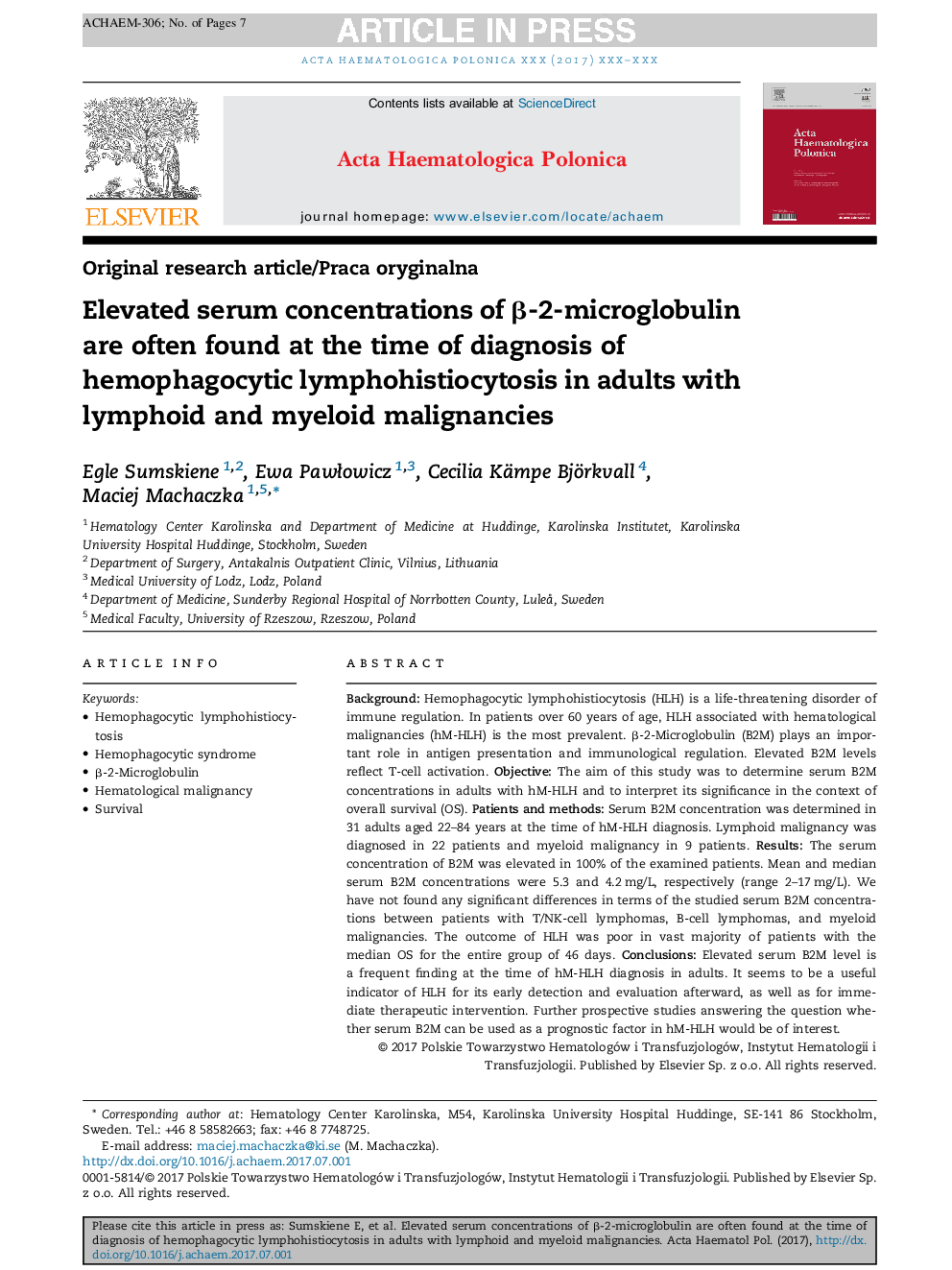| Article ID | Journal | Published Year | Pages | File Type |
|---|---|---|---|---|
| 5663579 | Acta Haematologica Polonica | 2017 | 7 Pages |
Abstract
Background: Hemophagocytic lymphohistiocytosis (HLH) is a life-threatening disorder of immune regulation. In patients over 60 years of age, HLH associated with hematological malignancies (hM-HLH) is the most prevalent. β-2-Microglobulin (B2M) plays an important role in antigen presentation and immunological regulation. Elevated B2M levels reflect T-cell activation. Objective: The aim of this study was to determine serum B2M concentrations in adults with hM-HLH and to interpret its significance in the context of overall survival (OS). Patients and methods: Serum B2M concentration was determined in 31 adults aged 22-84 years at the time of hM-HLH diagnosis. Lymphoid malignancy was diagnosed in 22 patients and myeloid malignancy in 9 patients. Results: The serum concentration of B2M was elevated in 100% of the examined patients. Mean and median serum B2M concentrations were 5.3 and 4.2 mg/L, respectively (range 2-17 mg/L). We have not found any significant differences in terms of the studied serum B2M concentrations between patients with T/NK-cell lymphomas, B-cell lymphomas, and myeloid malignancies. The outcome of HLH was poor in vast majority of patients with the median OS for the entire group of 46 days. Conclusions: Elevated serum B2M level is a frequent finding at the time of hM-HLH diagnosis in adults. It seems to be a useful indicator of HLH for its early detection and evaluation afterward, as well as for immediate therapeutic intervention. Further prospective studies answering the question whether serum B2M can be used as a prognostic factor in hM-HLH would be of interest.
Keywords
Related Topics
Life Sciences
Immunology and Microbiology
Immunology
Authors
Egle Sumskiene, Ewa PawÅowicz, Cecilia Kämpe Björkvall, Maciej Machaczka,
